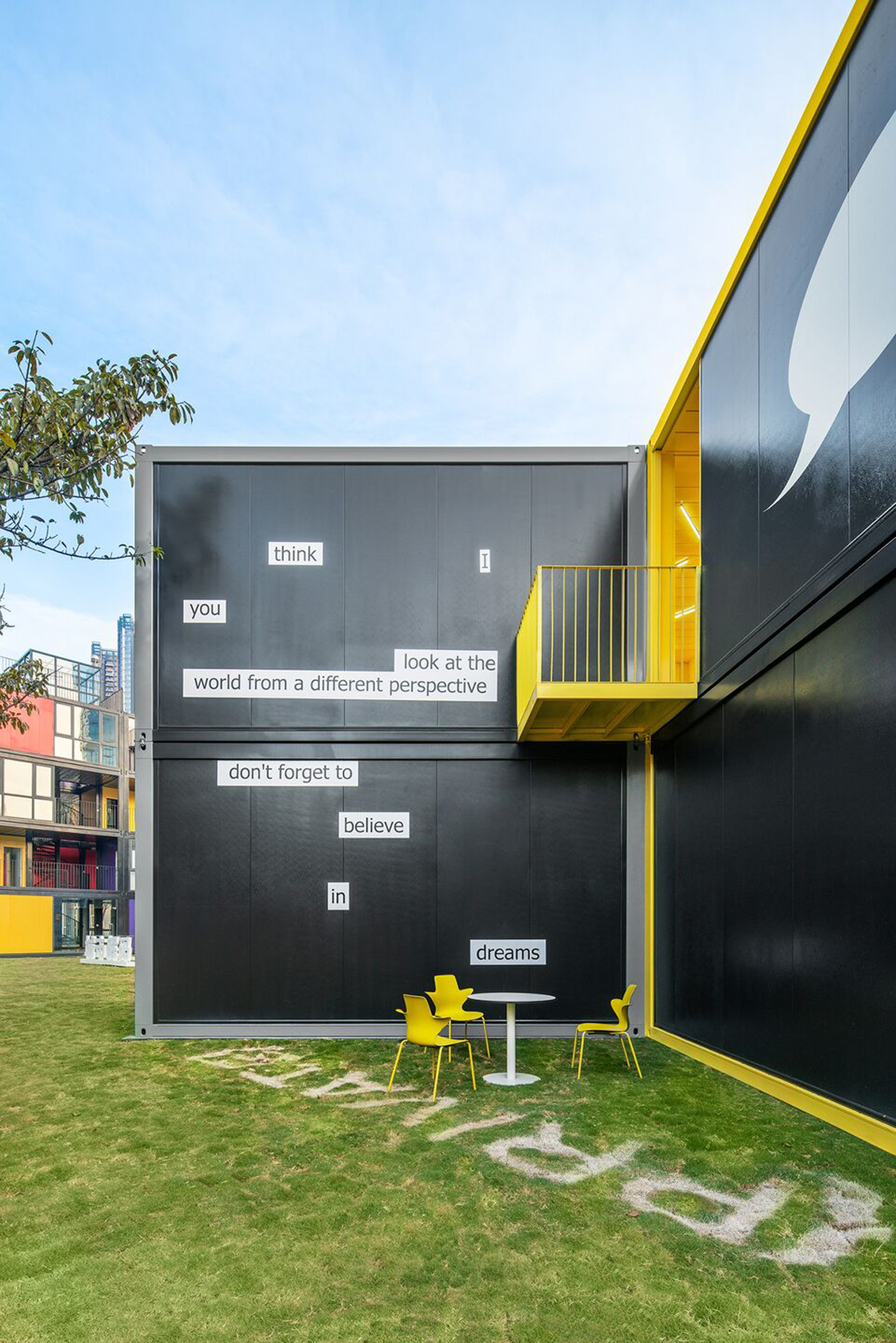Crossboundaries’ latest installation is made out of 12 shipping containers and is imagined as a fun inducing manifesto of future schools, where you can experience and imagine little glimpses of its principles. The installation makes up part of the group exhibition for the 2019 Shenzhen-Hong Kong Biennale, themed around potential models for future schools and the possibilities of prefabrication and modularization in the realm of educational buildings.
The group exhibition contains five installations in total, all utilizing the standard shipping container module provided by the organizers. Dubbed “INFINITY 6”, Crossboundaries’ installation takes an interlocked “X” shape, positioned on a 18x18m site.

The “X” shape creates plazas of different sizes and moods and the whole structure is open and welcoming no matter which side you approach it from. This idea ripples through our vision of future where school extends beyond its walls and becomes an open, interactive space. In the world in which education is becoming a lifelong journey, no longer limited to certain age, place or linear teaching programs, the notion of school should transform as well, to include more flexible, improvisational and collaborative mindset.

With INFINITY 6, the team at Crossboundaries expresses its vision through six principles: the school should be a shared place of gathering, a hub and an incubator of social interaction that engages not only students and teachers but entire community — the school should provide a richness in spatial experiences for children, blurring the separation between inside and outside, not only in context of space but also in terms of what kind of activities occur in these spaces. The classroom can spill out in the school yard or hallway or city and nature can be brought inside — providing a private space as an antidote to gathering is essential in offering a recluse, a place of calm and isolation that allows for individuality and encourages deep thinking.

Even a small effort in adding texture and color to the sensory palette of school exterior and interior, combined with kids’ unrestrained imagination can significantly expand and enrich the daily learning experiences — generous openings on the building facade can integrate the school with its surroundings by providing the glimpses into the school’s inner world and framing the interesting views of the city. The windows can extend their role further by becoming small reading niches that participate in the new dynamic way the learning can occur outside the classroom — finally, the school should be conceived as a smart, evolving space that encourages interactivity, embraces unpredictability of skills that future will require and thrives on the notion of constant adaptation and change.

















